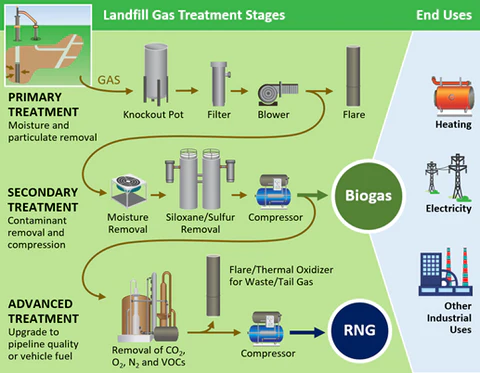
I was fortunate to have grandparents that lived across the street in the suburbs of my hometown outside of Johannesburg, South Africa. Preschool days were spent not in daycare, but doing life with grandpa, “Oupa Jan”. I watched and helped my tinkering hero tend to his orchard of fruit trees for making preserves and jam, harvest grapes from his small vine for making wine, work compost from his own pile into the garden, slaughter and clean hens for dinner and a myriad other daily projects that turned my days into a blur of adventurous activities. These have all cemented into precious childhood memories. A highlight would always be when we loaded up Oupa’s yellow 1970s Morris (Leyland) Marina pickup truck with yard waste to dispose of at our local municipal solid waste facility.
The waste site was hidden in between a number of large “mine dumps”, large mounds of mine taillings that were relics of more prosperous era, now serving as poor barrricades of the stench eminating from the landfill it housed. This was 1980, and riding on the back of a pick-up truck was perfectly safe, and on these days I would get to ride the back for the full 20 minute trip with the responsibility for monitoring that most of the yard waste stayed on the pick-up all the way to our destination. At the landfill, I would dash off into the trash on a treasure hunt, racing against the limited time Oupa could tolerate the smell before we had to leave, and on most days, the landfill did not dissapoint, but yielded treasure of tremendous variety. We often took home broken electronics, toys, furniture or other junk that we would take apart, tinker with or try to fix up into a second life. Reflecting on this today, I’m grateful for a grandfather that took delight in his grandchild’s curiosity!
Trash to treasure – Renewable Natural Gas
While modern municipal landfills still bury the same “treasure” I was hunting as a child, modern landfill management techniques eliminate the odor and allow us to recover the byproduct landfill gas a as valuable renewable energy resource. We create mountains of trash, with a city the size of Greater Toronto generating more than 4,200,000 tons per year of municipal solid waste (MSW) that end up in landfills. In fact, by some measures trash generation in the US has tripled in the last 60 years.
Landfills still hold significant treasure, however. Decomposition of MSW by microorganisms of the organic matter in landfills produce landfill gas (LFG), a biogas which composed of approximately 50% methane, with the remainder being carbon dioxide and water vapor. This renewable resource represents a major opportunity, but also a threat to our climate. Only about 20% of the landfills in the US collect landfill gas. The result is that methane emissions from US and Canadian municipal landfills are major contributors to greenhouse gas emissions, with 15% and 23% respectively of all methane emissions in these countries originating in landfills. Canada has a draft proposal that would allow landfill operations to generate credits for capturing or destroying the landfill gas. Regulations in California already require installation of a landfill gas collection system when the landfill has an annual capacity to produce 650 tonne of LFG.
Today, LFG undergoes treatment to create biogas or renewable natural gas (RNG) which is sold as a renewable equivalent to natural gas, with processing steps as shown in the figure below.

RNG to Carbon-free Renewable Hydrogen
The downside of RNG is that it is comprised of methane, still a potent greenhouse gas, and also still emits carbon dioxide into the atmosphere when burned.
Nu:ionic’s patent pending microwave catalytic reforming technology converts landfill gas to high purity hydrogen, while capturing significantly more harmful greenhouse gas when compared to alternative processes. Our technology combines renewable electricity with RNG, converting the RNG into zero-emission fuel which can power refuse trucks, transit buses or heavy duty trucks.
Hydrogen fuel cell refuse trucks are already used in Europe, where they displace equivalent payload diesel trucks and deliver zero emission municipal solid waste collection. Ballard reports more than 2,200 hydrogen fuel cell trucks and transit buses on the road using its technology, and other manufacturers are also emerging with solutions, including Hyzon Motors and Nikola Motor.
The Nu:ionic process captures by-product carbon from our conversion process in the form of high purity carbon dioxide as a commodity gas which can be recycled in a circular economy into atmospheric enhancements for crops grown in controlled environment greenhouses to increase crop yield, or to carbonate drinks; preserve freshness of fruits and vegetables during transport or to extend shelf life of baked goods.
What’s more, Nu:ionic’s RNG to hydrogen plants can be configured to be highly carbon negative – effectively removing carbon dioxide from the atmosphere. The hydrogen produced in this manner has a well-to-plant exit carbon intensity of -70 g CO2/MJ H2.
To summarize, in the Nu:ionic approach, the carbon dioxide forms a circular economy, while the energy produced from the waste in our landfills is transformed into zero emission hydrogen fuel:

Summary
The motorheads at Top Gear have repeatedly called the Morris Marina “the worst British vehicle every produced”. However, I have priceless memories sharing moments with “Oupa” in his yellow Marina pickup truck. Landfills provide a responsible way for modern society to manage municipal solid waste, and can be fitted with capture systems that enable the recovery of renewable energy, yielding treasure from that trash. Nu:ionic offers a way to make that renewable resource less harmful by converting it to low carbon, renewable hydrogen.
We’re partnering with RNG developers to convert their landfill gas into zero-and negative carbon hydrogen.
Get in touch to see if your landfill gas or renewable natural gas project might be fit for the production of renewable hydrogen.

